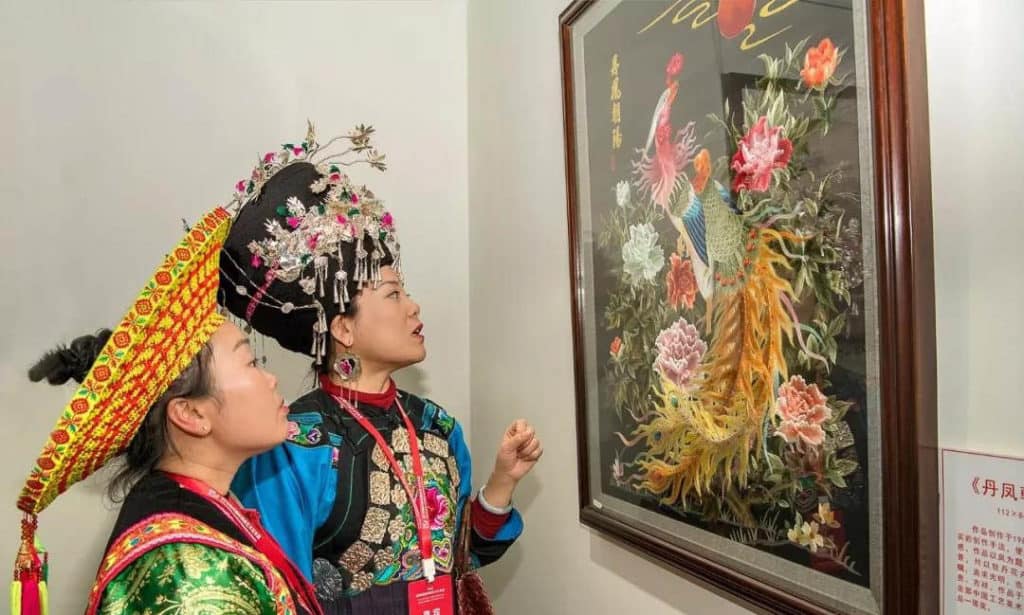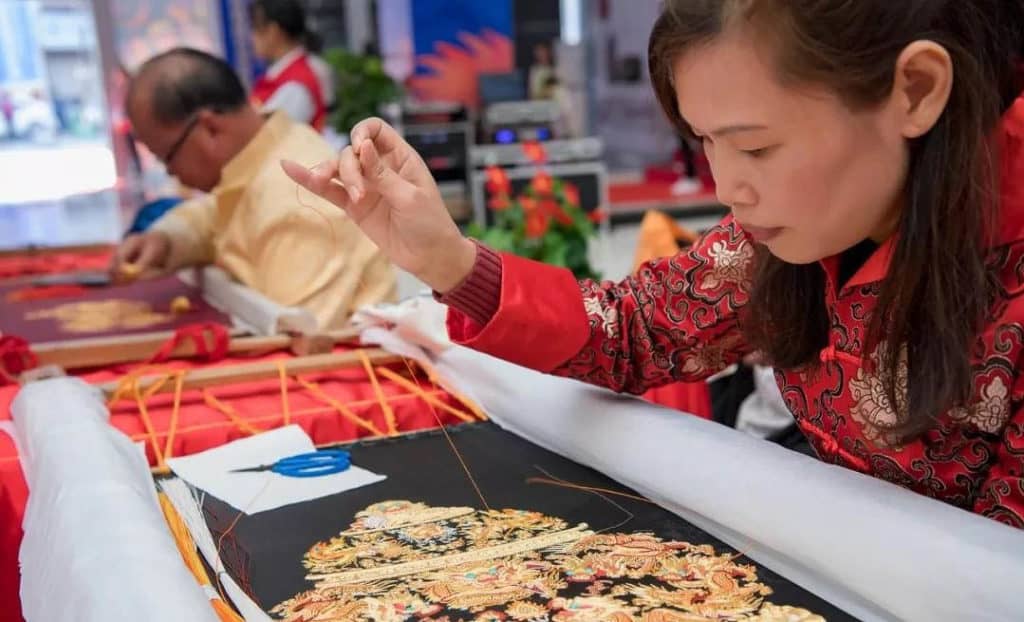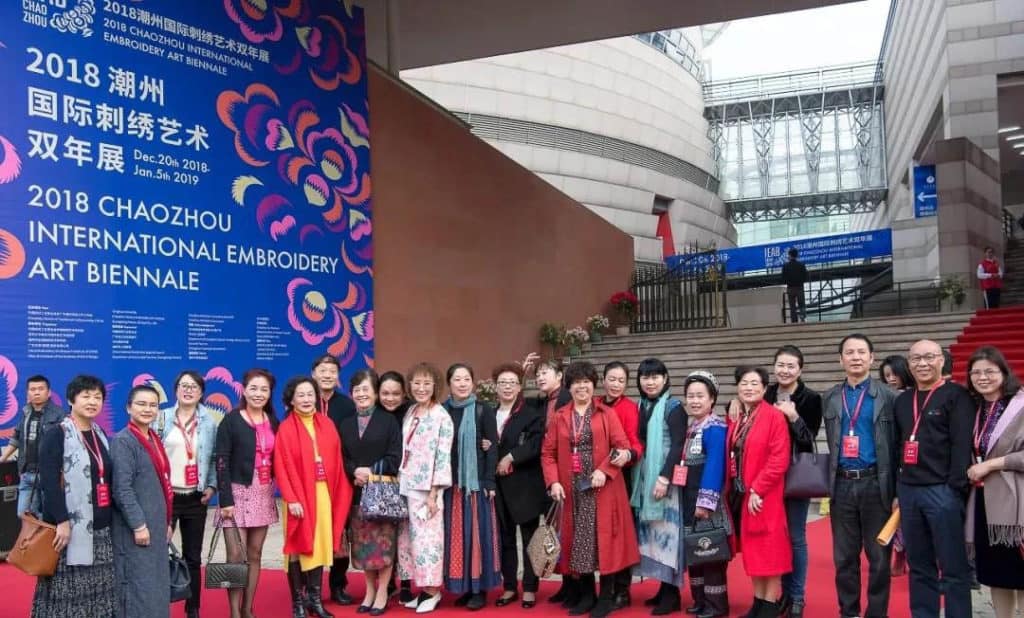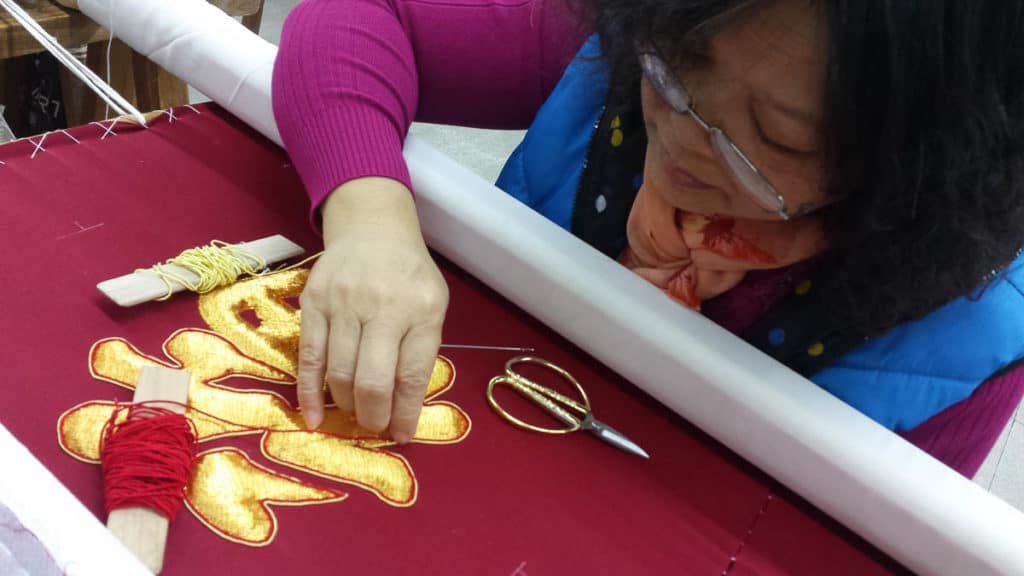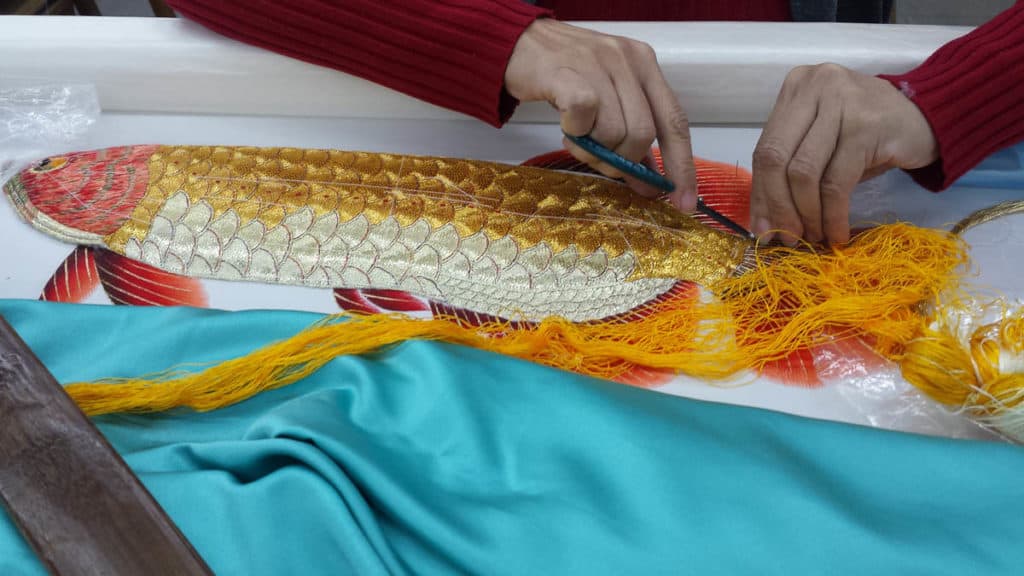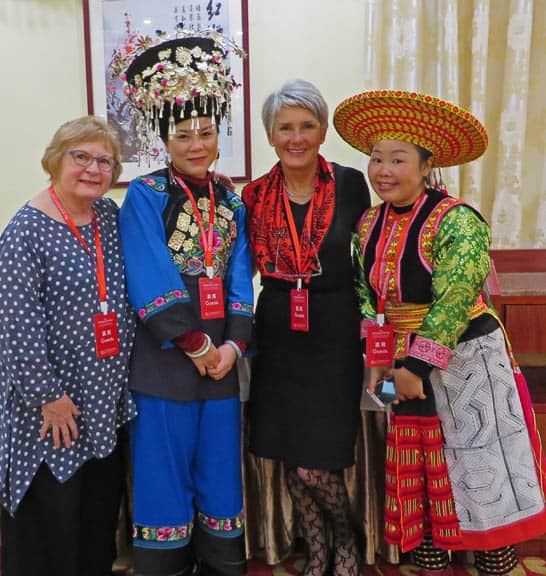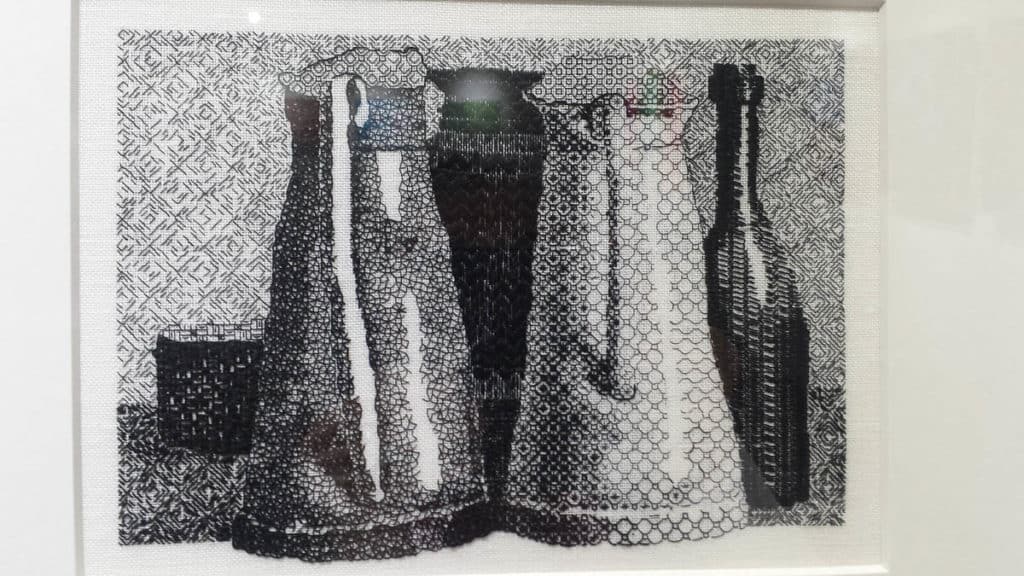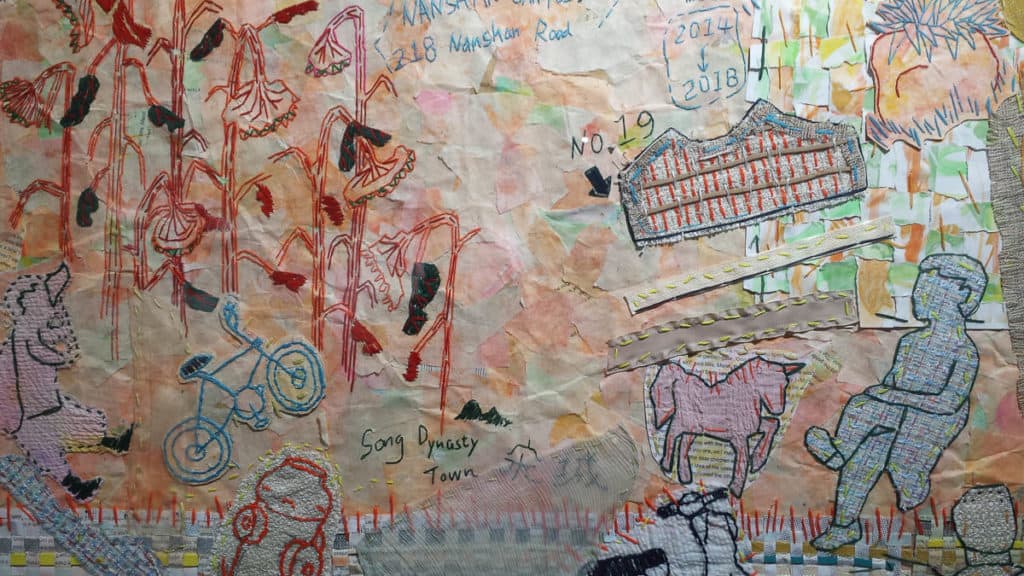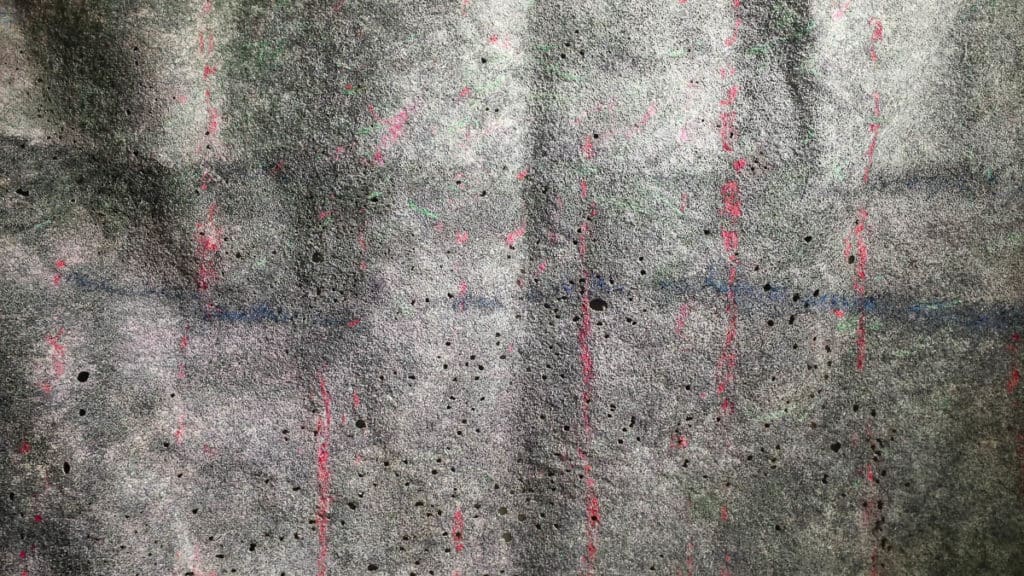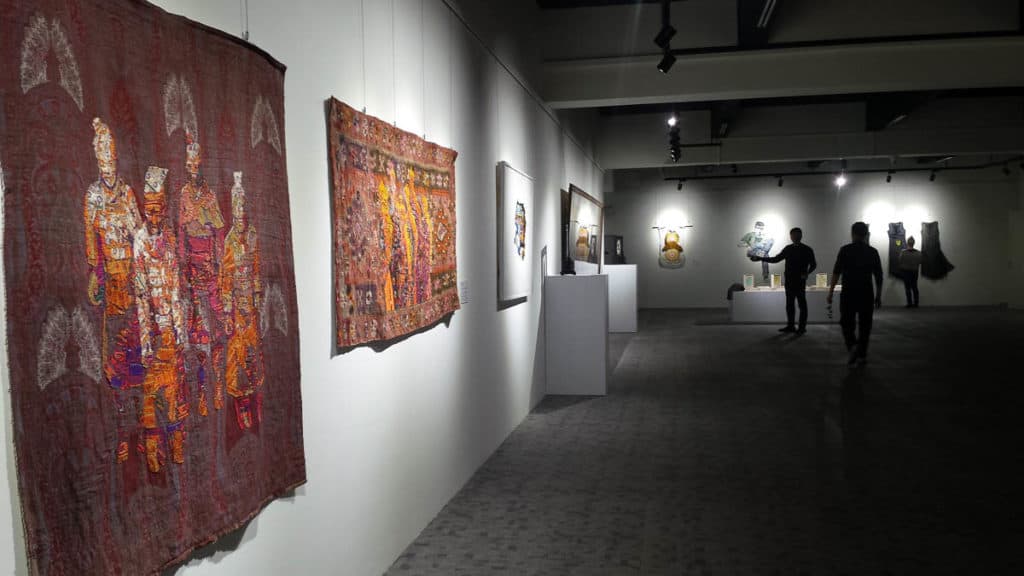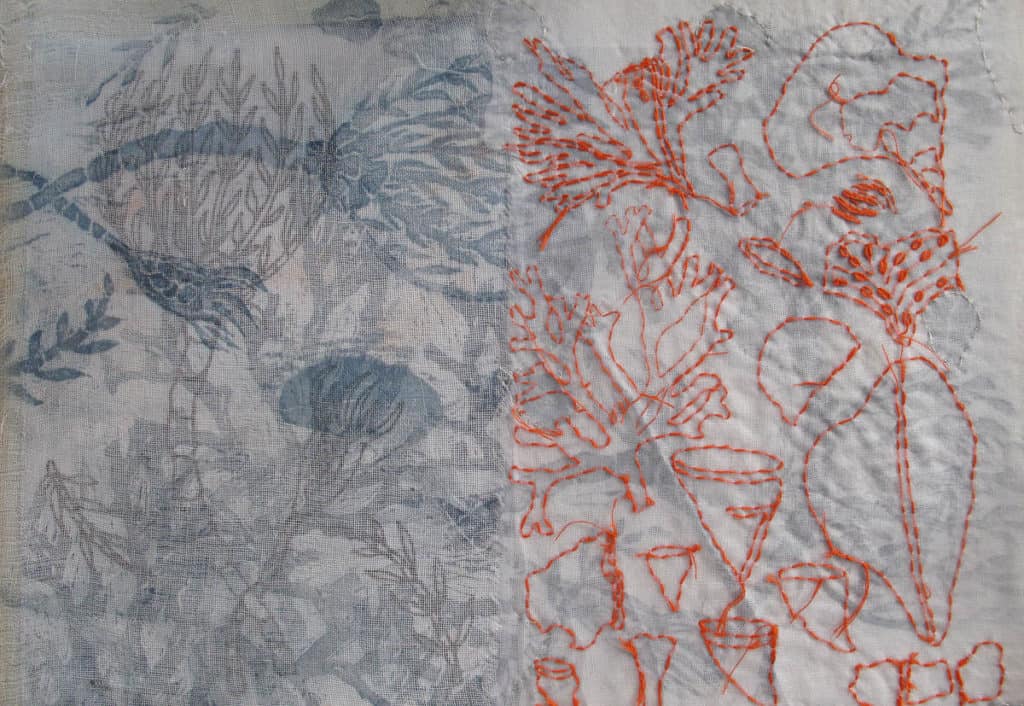- Minority artists
- Intangible cultural heritage artist
- Intangible cultural hertiage artist doing embroidery
- Participating artists
- Valerie Kirk, opening ceremony, photo: Valerie Kirk and Marie Bergstedt and others using our cameras
- Famory workshop
- Famory workshop
- Marie Bergstedt, Chinese minority group artists and Valerie Kirk
- Wu Di, Re-interpreting Morandi
- Dai Hao Cheng, 2018-2018
- Liu Hui, Time, 2018
- Exhibition view
- Valerie Kirk, Collage5, 2017, 38×49
- Dora Hara
In 2018 I travelled to China for the inaugural 2018 Chaozhou International Embroidery Art Biennale, launched in Chaozhou, Guangdong Province. It was an important event supported by the Ministry of Culture and Tourism of the People’s Republic of China with many local and national government, cultural and industry figures attending.
There was a grand opening ceremony with the golden glitter of the “long bar” ritual, symposium, formal dinners, exhibitions and workshop visits. The exhibitions featured works under three topics, “Life & Fashion”, “Inheritance & Rejuvenation”, and “Integration & Transcendence”, and they continued until January 5 2019. Over 300 designers from 13 countries, including China, Australia (Valerie Kirk, Ema Shin, Sera Waters and Jane Theau), Poland, Denmark, Germany, South Korea, the Netherlands, Canada, USA, Norway, Japan, Sweden and Switzerland were represented.
I was invited to participate as an official Chinese Government sponsored artist and speaker, through my previous work with Professor Lin Lecheng, the curator of the International Fibre Art Biennial, “From Lausanne to Beijing”. We both understand that building relationships to work towards common goals is important. Previously, I had exhibited, judged the Fibre Art Biennial and worked in China as a visiting artist three times. On this visit I spoke at the opening ceremony on behalf of the international artists saying, “Being here, seeing the work and meeting other artists is inspiring and gives me a greater understanding of embroidery throughout our contemporary world. We can focus on how this area of contemporary practice is developing and garner ideas for the future.
“As exhibitors, we stand on the shoulders of many generations of embroiderers around the world. Traditions and techniques have been passed on as children learned the art from mothers and grandmothers, students studied under experienced teachers and apprentices in workshops learned the skills from master embroiderers.”
It was important that the government and sponsors could see and hear the foreign presence and that the press and T reporters could interview foreign artists. We were ambassadors for the rest of the world and evidence of the success of the international part of the exhibition, reaching out to the world. These aspects are vital to the continuation of the Biennale through further financial and political support.
Everyone who participated in the event, exhibiting and meeting in China, was committed to the mission statement, “to promote research and protection of intangible cultural heritage, revitalize traditional embroidery crafts, advance splendid culture and enhance international exchange.” There was a great sense of joy and sharing, working together towards common goals and it was a pleasure spending time with other artists, meeting minority group embroiderers in their traditional dress and a wide range of people. Seeing the public response to the exhibitions was amazing: people were so friendly and enthusiastic, taking selfies and photos with artists. The museums and gallery spaces are huge and impressive—major architectural and design projects. My experience in China has always been positive and inspiring. People could not be more helpful. I want to go back again to travel and see more of the vast country, visit textiles workshops and do a residency. There is so much to learn and understand.
Party Secretary and Secretary General of China National Textile and Apparel Council, Gao Yong, delivered a speech at the opening ceremony, saying that Chinese embroidery is of the most outstanding traditional skill in the world. In support of this statement, the Biennale showcased Chinese individuals and workshops that have continued to produce impressive works in at least 15 embroidery styles developed in regions of the country. The four most famous ones are Suzhou – Su Xiu (苏绣), Sichuan – Shu Xiu (蜀绣), Hunan – Xiang Xiu (湘绣) and Guangdong – Yue Xiu (粤绣). The high calibre local style of Chao embroidery, identified by smooth thread work, gold/ silver embroidery and padded, low relief forms originated in Chaozhou and the works exhibited from this area confirmed the supreme skills of the embroiderers. In workshops we visited, master embroiderers with over 60 years of experience were working beside their trainees. We witnessed the living traditions: teaching and learning in action, skills being passed on to the next generation to ensure that the knowledge is carried forward into the future. Now the major forms of embroidery have been listed in the National Intangible Cultural Heritage Project, China. This acknowledgement at the highest level shows respect for the traditional art and belief that there is an ongoing place in the world now for embroidery.
In the symposium, artists spoke about embroidery now and the ways that adaptations can be made to make embroidery relevant in our lives today. Fashion designer and curator, Yang Beibei shared her experience of working with embroidery in her designs, inspired by traditional Chinese embroidery. Other artists shared their love of the medium and ways that they were developing new possibilities for the medium. One of my most exciting discussions was with Sujuan Wang, Center of China National Arts and Crafts Society, who showed me images of hand embroidered images on new Belkin tech products (speakers, chargers, thumbprint readers). The soft thread and mark of the hand imbue the innovative, high-performance objects with a human touch.
The GUANGDONG FAMORY(GROUP) CO.,LTD sponsored the Biennale and showcased the embroidered and beaded wedding dresses the company now produces for high-end distribution in USA and Europe. The company demonstrated its commitment to promoting and furthering the art of embroidery, transferring the use of skills from traditional art forms to contemporary product and embracing innovation of techniques, materials and equipment use.
The organising committee hoped that this Biennial could pave the way for traditional skills like embroidery to move into contemporary life and provide a platform to promote exchanges and cooperation between the embroidery industry in China and other countries around the world. I hope that many positive outcomes can be achieved as so many people at all different levels worked so hard to launch the Chaozhou International Embroidery Art Biennale. Look out for the next Biennale in 2020.
References
Chaozhou International Embroidery Art Biennial Opens Women of China
An Introduction to Shu, Xiang and Yue Embroidery Art of Silk
Author
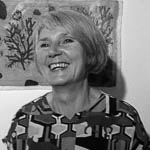 Valerie Kirk studied art and design at Edinburgh College of Art, where she discovered woven tapestry. As a recent graduate, she came to Australia and worked in the Victorian (now Australian) Tapestry Workshop and travelled the country to teach in communities and colleges, work as an artist-in-residence, exhibit and lead community tapestry projects. While actively maintaining her practice as an artist, Valerie has researched Australian Indigenous textiles, directed significant projects, ran international textile tours and created major commissioned works. She is currently weaving a tapestry about the work of scientist Graham Farquhar for ANU University House, working towards exhibitions and a residency in Paris and planning textile tours to Peru, Ecuador, Laos and Burma.
Valerie Kirk studied art and design at Edinburgh College of Art, where she discovered woven tapestry. As a recent graduate, she came to Australia and worked in the Victorian (now Australian) Tapestry Workshop and travelled the country to teach in communities and colleges, work as an artist-in-residence, exhibit and lead community tapestry projects. While actively maintaining her practice as an artist, Valerie has researched Australian Indigenous textiles, directed significant projects, ran international textile tours and created major commissioned works. She is currently weaving a tapestry about the work of scientist Graham Farquhar for ANU University House, working towards exhibitions and a residency in Paris and planning textile tours to Peru, Ecuador, Laos and Burma.
Photo Credits: Valerie Kirk and Marie Bergstedt and others using our cameras. Apologies for lack of credit to named people in photos as I often did not get people’s names at the time.

